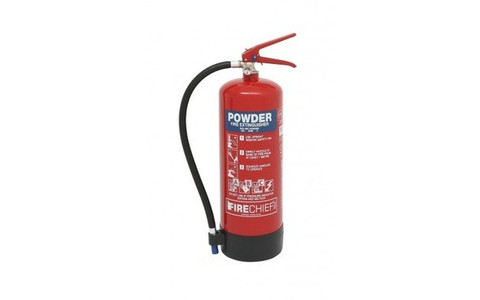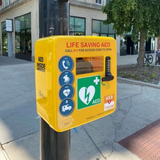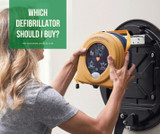What type of fire extinguisher should I use?
With Fire and Rescue services attending 564,827 fire-related incidents in 2017/2018 and with 334 fire-related fatalities in the same period, there is no doubt that fire safety should be the top priority when it comes to safety in the workplace, at home and in public environments.
With many fire prevention safety equipment resources available on the market such as fire blankets, fire hoses, fire alarms and more, it is important to ensure you have the appropriate fire prevention and safety equipment available for the event of an emergency.
Fire extinguishers are a great tool to have in the work place or any public environment in order to put out small fires and stop the spread of flames. As of course, fires can start in a number of ways, there are different fire extinguishers to combat flames in the unlikely situation that a fire should occur.
Fires vary from Class A fires which involve carbon materials such as wood, textiles and paper and run along to Class F fires which involve cooking oils and fats. With a range of fire extinguishers on the market it is important to know which is best for your working environment to keep you and everyone around you safe.
The most common, water fire extinguishers are full of water with compressed air and are most appropriate for Class A fires. They work by removing heat, making it impossible for a fire to burn and are often seen in warehouses and storage units. Although these types of fire extinguishers are the best tool for fires started by carbon materials, it is important to note that they should not be used on electrical fires or fires involving flammable gases.
Foam fire extinguishers are another very common type of extinguisher and are used for fires involving flammable solids and liquids such as petrol and diesel (Class B fires). As they are mainly water based, they work in a similar way to water fire extinguishers as they remove the heat from a fire but, they also contain Aqueous Film Forming Foam (AFFF) which smothers the fire and seals flammable vapours to prevent the fire from re-igniting. Foam fire extinguishers can often be seen in hotels, garages, offices and warehouses.
Powder fire extinguishers are a great fire safety resource to have as they are suitable for putting out a variety of fires and work by forming a barrier between the fuel and the source of oxygen making them ideal for fires involving wood, petrol, gases and electrical fires. Powder fire extinguishers are useful in garage forecourts, large commercial boiler rooms and large workshops.
As well as water, foam and powder fire extinguishers, there are also fire extinguishers on the market which tackle Lithium Ion battery fires such as mobile phones, tablets, laptops, toys and power tools. They extinguisher uncontrollable flames by cooling excessive heat whilst preventing re-ignition.
As you can see, there are a variety of fire extinguishers available which all combat different types of fire. Knowing which is the most appropriate for your environment can really make all the difference, preventing the spread of flames causing damage to property and more importantly protecting peoples safety.
Recent Posts
-
Empowering Communities: The Lifesaving Impact of CPR on Restart a Heart Day
Every year, on and around October 16th, an important event takes place - Restart a Heart Day. This a …16th Oct 2023 -
Which home defibrillator?
80% of all out of hospital cardiac arrests occur at home. Defibrillators are often available in loca …4th Dec 2022 -
Which defibrillator should I buy?
There are many defibrillators available on the market and it can become overwhelming knowing which o …4th Nov 2022




